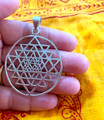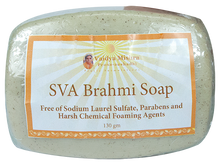 Loading... Please wait...
Loading... Please wait...Categories
- Ashwagandha
- Magnesium
- Preserves
- Turmeric
- Dosha: Pitta
- ASHOKA formulations
- Bath Pouches
- Bone Care
- Chyawanprash
- Souvenirs
- Creams
- Dosha:Vata
- Eyes, Ears, Sinus, Throat
- Face Clay
- Immune
- Dosha:Kapha
- Laundry
- Lentils
- Lip balms
- Liver & Kidneys
- Lotions
- Masalas
- Muscles & Joints
- Oral & Mouth
- Shampoo & Conditioner
- Soaps
- Spray Mists
- Pre Biotics and Probiotics
- Stress & Adrenals
- Dosha:Pitta
- GHEE
- Garcinia
- Protein For Vegans and Vegetarians
- Chutneys & Preserves
- Circulation: Physical and Vibrational
- EVERYTHING ROSE
- Lotions, Creams, & Body Mists
- Shilajit in Formulations
- Thyroid & Adrenals
- Guduchi: Transdermal, Transmucosal, & Oral
- Lotions & Body Creams
- Floral Aromas, Incense, Air Freshener, Body Mist
- Autumn Care
- Ayurvedic Pet Care
- Baby & Children
- Bath, Soaps & Deodorants
- Body Massage Oils
- Cellulite & Skin Care
- Colon Care
- Cooking, Spices, Condiments, & Oils
- DETOX
- Cough & Cold
- Digestion
- ONLINE Courses, Audio, and Printed Materials
- EMF Management
- Emotional Support & Balance
- Eye & Vision
- Fat & Sugar Metabolism
- Gift Baskets
- KICHDI-ON-THE-GO
- Hair Care
- Herbal-Memory Nectars
- Herbal Teas/Coffee Substitutes
- Home (Air Fresheners & Laundry)
- Hormonal Modulation for her & for him
- HP Herbal Nectar Drops
- Immunity & Health
- Individual Herbs & Spices
- Lalita’s Skin & Beauty
- Men’s Health & Shaving
- Mind & Mental Stress Support
- Moringa
- Multi-Minerals
- Oral Care - SVADANTA
- Silver Gift Items
- Sinus Care & Nasya (Nasal) Oils
- Sleep
- Special Needs: Skin & Body
- Stress Management
- Summer Care
- SVA Samadhi with Marma
- Tablets and Capsules
- Transdermal Creams
- Tulsi
- Tridoshic Pain Management
- Vit D, B12, Magnesium, ALA, CoQ10
- Travel Sample Sizes & Starter Kits
- Wild Amla & Chyawanprash
- Winter Care
- Women's Health
New Products
Our Newsletter
- Home
- Summer Care
- Brahmi Herbalized Soap
Product Description
The word brahmi in Sanskrit represents brahman, the wisdom of integration of life. Brahman is the experience of unity consciousness, which the saints and sages have been describing since the beginning of time.
Everyone has this wisdom of brahman latent in the light of the soul, but the brain has to have enough power to experience it directly. Unity in diversity is the all time reality of life, but we do not experience the underlying unity because the nervous system is not strong enough to hold it.
As a result, we live in a world of differences and separation. We suffer because happiness is short-lived—it is based on the ever changing situations, people and objects around us.
To come out of this insanity and to experience the reality of life (brahman, or unity) we have to strengthen the brain. Without a normally functioning brain, the experience of brahman alludes the most strenuous attempts to realize it.
Brahmi Strengthens the Brain So You Can Experience Higher States of Consciousness
Brahmi is a plant that nurtures the physical and vibrational brain. It helps us to see clearly the ultimate reality of life, brahman.
The original brahmi plant is extinct but, for countless generations, Vaidya Mishra's family of Shaka Vansya Ayurveda has been using the combination of mandukaparni (gotu kola) and aindri (bacopa monnieri) as a nearly perfect substitute for the original brahmi.
You can learn more about these two important herbs directly from the Sanskrit verses in Vaidya Mishra's audio lectures:
Mandukaparni - Learn About the Ability of Gotu Kola to Improve Mental Function (27 minute downloadable audio lecture in MP3 format for only 99¢)
Aindri - Learn About the Brain-Nourishing Ability of Bacopa Monnieri (Jal Brahmi) (35 minute downloadable audio lecture in MP3 format for only 99¢)
Why Brahmi Soap?
You may be wondering, "If brahmi is good for strengthening the mind, why would Vaidya Mishra make brahmi in soap form?" There are several reasons for this.
The first reason is that brahmi taken internally may not ever reach the brain intact. If the liver is full of toxins, the divine quality of this herb will be corrupted by the sharp, acidic toxins of the liver.
When this happens, only the "dead body" of brahmi reaches the brain. The vibration of brahmi, which is the most important aspect of the herb for strengthening the brain will be missing. The prabhava (special quality) of brahmi to support the experience of higher states of consciousness will be lost.
When brahmi is delivered transdermally (in soap or transdermal cream form) it bypasses the toxic liver and delivers the prabhava of the herb directly to the brain within seconds.
Brahmi is Good for Complexion
Another important reason for taking brahmi in soap form is that brahmi is well known from the ancient Ayurvedic texts and from modern research to be good for complexion.
For example, aindri (bacopa monnieri) is described by Bhava Prakash as being kushtaghni (getting rid of skin problems). This is partly due to the bitter principle (bitter herbs help clean the liver, a clean liver makes good blood, and good blood makes healthy skin).
Aindri (bacopa monnieri) is good for skin diseases for another reason too. Most skin problems are related to improper functioning of the mind. In Sanskrit it is called pragyaparad (mistake of the intellect).
When the mind does not enjoy the peaceful experience of unity in the midst of diversity and change, then stress becomes a living reality. Stress causes the release of amavisha (stress hormones and other immuno-toxins) into the blood. When this happens for years on end, the liver becomes toxic and the skin ultimately suffers. In some cases, the effect can be more immediate.
Aindri is also highly alkalizing which helps to balance the skin's pH. Its slimy, foaming properties help to bind amavisha (toxins generated from inside the body) and garavisha (xenobiotics).
Mandukaparni (Gotu Kola) also plays an important role for complexion. Mandukaparni is described by Bhava Prakash as ayushya (giving long healthy life and having anti-aging properties), rasayani (reversing aging and keeping away disease), and kushtaghni (getting rid of skin problems). This is confirmed by modern research which reports increased collagen synthesis among other benefits for the skin.
The combination of aindri and mandukaparni in this soap provide a powerful rejuvenating treatment for the skin.
Uniqueness of Vaidya Mishra's Soaps
As soon as you smell one of Vaidya Mishra's soaps you will understand that they are unlike any others available on the market today. The aroma is subtle, and free of chemical overtones.
Vaidya Mishra is an expert at preserving nature's intelligence contained in the herbs without using harsh extracting agents like benzene or hexane, and without using preservatives like parabens. These chemicals destroy the subtle intelligence of brahmi, rendering it useless to support the vibrational body and mind. The chemical residues found in many soaps may also be harmful to your health.
In the same vein, Vaidya Mishra does not use Sodium Laurel Sulfate as a foaming agent in his soaps. This chemical would also damage the delicate intelligence of brahmi if it were used. It may also damage the skin's intelligence.
You will see what soap can really be when you use Vaidya Mishra's Herbalized Brahmi Soap. It is alive with the subtle energy of brahmi, ready to be delivered to your brain and to your skin. It's also the perfect soap to use before you meditate.
Brahmi Herbalized Soap Ingredients
“Total Brahmi” (Vaidya Mishra’s proprietary herbal blend), Grapefruit, Sweet Orange in a base of Shea butter, Coconut oil, Palm oil and Safflower oil, with Sorbitol, Sorbitane oleate and Purified water
Soap Size
130 gm.
Directions
Use in the shower or bath, by the sink, or wherever you keep soap. You can use on the hands, the face, or the body.
As with all herbs, please consult your physician before using.
Brahmi in Our Herbal Products
Aindri is usually listed in our products as bacopa. It is also present anywhere you find the name brahmi in Vaidya Mishra's formulations. Brahmi in our products means the balanced combination of aindri (bacopa) and mandukaparni (gotu kola).
- Contains only the essence of the herbs with their subtle vibrations.
- Bypasses the digestive system and liver, which may be weak, to deliver the vibration of these divya aushadhi (divine herbs) directly to the brain.
- Should be added to 1 to 2 liters of cool water and sipped throughout the day.
- Delivers the combination of aindri and mandukaparni directly to the brain without having to go through the digestive or metabolic system, which are often weak or corrupt in modern society.
- Contains only the essence of the herbs with their subtle vibrations.
- Is suspended in a lipid-based cream to easily deliver brahmi to the brain, which is a lipid-predominant organ.
- Allows for slow release of brahmi over several hours through the skin.
- Uses aindri only, without mandukaparni, when there is a need for this more soma-predominant herb.
- Delivers the physical properties of the herb for maximum medhya agni vardhani effect (improving the power of the brain).
- Can get corrupted by poor digestion or weak liver, which can cause the divinity of the herbs to be lost and the effectiveness to be minimized.
Neem and Brahmi Liquid Soap and Body Wash
- Delivers the essence of brahmi through the skin to nourish your brain while you bathe.
- Can be used as a liquid soap, or even as a detergent for washing dishes at the sink.
- Bypasses a poor digestion or weak liver.
- Has a stimulating peppermint aroma.
- Contains both aindri and mandukaparni for the most balanced and powerful effect on the mind.
- Delivers the physical properties of the herbs, which is sometimes necessary to get the full benefits.
- Can get corrupted by poor digestion or weak liver, proving it to be ineffective.
Gotu Kola Herbal Memory Nectar
- Provides the essence of the agni-predominant herb, mandukaparni, with minimum heating quality.
- Is suspended in the cooling nectar of squashes to further balance the herb's warming effect.
- Bypasses the digestive system and liver, saving the divine vibration of the herb from corruption.
- Delivers the sukshma bhag (subtle essence) and prabhava (special properties) of gotu kola directly to the brain.
- Gives the full physical properties of aindri (bacopa) for use in herbal water.
- Can stimulate the liver more than the Herbal Memory Nectar or Transdermal Creams.
- May get corrupted by weak digestion or liver.
- Brahmi is the first ingredient of this sesame oil based massage oil.
- Delivers the lipid soluble fraction of brahmi through the skin directly to the brain.
- Calms the mind with other herbs and oil, while awakening it with brahmi.
- Has a delightful, warming aroma.
- Contain brahmi as a secondary ingredient.
- Help balance skin and hair by reducing toxins in the blood caused by pragyaparad, as described above.
- Can get corrupted by poor digestion or weak liver.
Disclaimer
This product and statements have not been evaluated by the FDA (Food and Drug Administration) and are not intended to be used to diagnose, treat or cure any disease. All of the information above is intended to be used for educational purposes only and may not be used to replace or compliment medical advice.
















